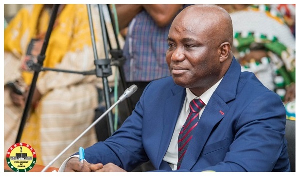Accra, May 31, GNA 96 Three Members of Parliament from the Minority Side on Wednesday questioned why the Upper East and Upper West Regions were excluded from projects to be undertaken with the Millennium Challenge Account (MCA)
The three - Mr Edward Salia, (NDC) Jirapa; Mr Moses Asaga, (NDC-Nabdam) and Mr Alban Bagbin, the Minority Leader 96 questioned Dr Paa Kwesi Nduom, Minister of Public Sector Reforms, on the criteria used to select areas to benefit from the projects.
The thrust of their argument was that since poverty was a major criterion in the selection of beneficiary areas the two regions should have been included.
Dr Nduom, who was in the House to respond to a question on what the Government=92s plans were to utilize the funds from the MCA regionally and sectorally, mentioned poverty profile; agriculture potential; private sector investments already on the ground and the availability of water as the four criteria used to select areas that were to access the MCA.
He said the MCA programme was an integrated agriculture undertaking that would be carried out in 23 districts in the Greater Accra, Eastern, Volta, Northern and Ashanti Regions.
Mr Salia wanted to know whether the criteria used to select the beneficiary regions were in line with the Growth and Poverty Reduction Strategy (GPRS).
Mr Asaga questioned if it was not possible to review the selection of the regions to make for equity in the implementation of the MCA programme.
Mr Bagbin specifically wanted to find out from the Minister, which particular criterion or criteria out of the four; disqualified the two regions from being selected for the programme.
Dr Nduom said the funds from the MCA could not go round every region and explained that it was only the beginning, adding that in development matters there was the need to start from somewhere. Earlier, Dr Nduom told the House that MCA programme "provides for resources along multiple regions utilizing a multi-sector value chain approach=92.
For instance, resources are allocated based on specific interventions for the provision of post-harvest infrastructure; schools; water and electricity and the rehabilitation of feeder roads, some of which might stretch from one region to another. 31 MAY 06
General News of Wednesday, 31 May 2006
Source: GNA
















